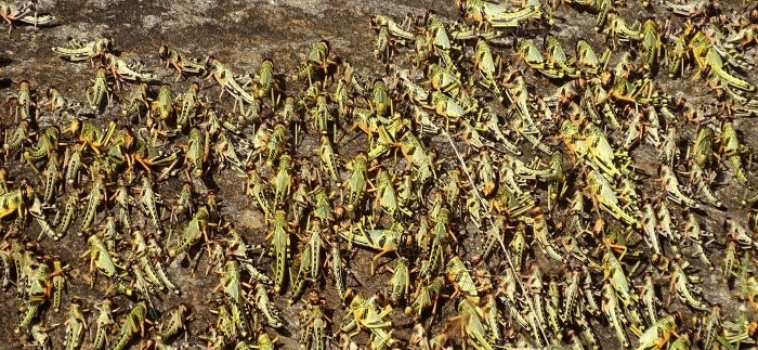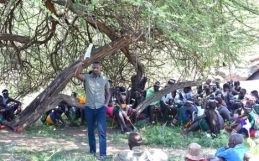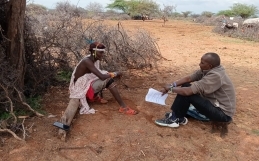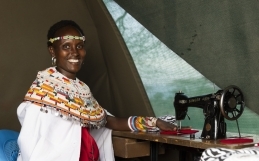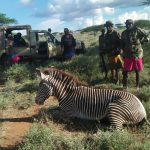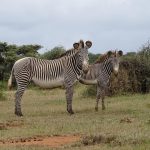By Belinda Low Mackey
The desert locust… where to begin? I’m all sweaty after rushing around camp with the team, banging a metal spatula against a large sufurir (cooking pot) and deafening myself, while trying to disturb the desert locust swarm that landed on our camp’s beautiful Acacia tortilis trees and were eating them at an alarming rate. We watched as the tortilis flowers drifted to the ground like snowflakes under the relentless feeding pressure of the locusts. But our anti-locust band was once again successful. Other instruments in this cacophonic orchestra included all manner of metal kitchen utensils, rocks being shaken in metal buckets, and shrieking whistles. It was an unexpected team-building opportunity and we all felt triumphant as the locusts flew on.

@Shivani Bhalla – desert locust swarm flying over Westgate
At the end of December 2019, the first swarms of the desert locust arrived in northern Kenya from neighbouring Somalia, but the origins of this flying feeding army began much further away. Between May and October 2018, conditions in the remote Arabia Rub’ al Khali desert of southern Arabia, allowed for desert locusts to breed undetected. Once the desert dried up, the locusts formed swarms and flew south into Yemen. With the ongoing conflict in Yemen, no control measures are possible, and it was only a matter of time before the locusts flew across to the Horn of Africa, where the recent extended rainy season has allowed them to further thrive. With no control possible in southern Somalia due to insecurity, the number of swarms entering Kenya is growing at an alarming rate.
The measures being used to control the desert locust are currently limited to organophosphate pesticides that have potential harmful effects on human health and biodiversity. A bio pesticide – metarhizium – that has been specifically developed for desert locust control, is still awaiting registration in Kenya. With the current coronavirus lockdown measures in place, we are unsure of what the control effort will look like going forward. We do not know what this looks like for the long-term future of Grevy’s zebra and other wildlife – but we are anticipating that short-term supplementary feeding interventions will happen, either later this year or next year, depending on climatic conditions and whether locust control efforts can flatten the curve.
